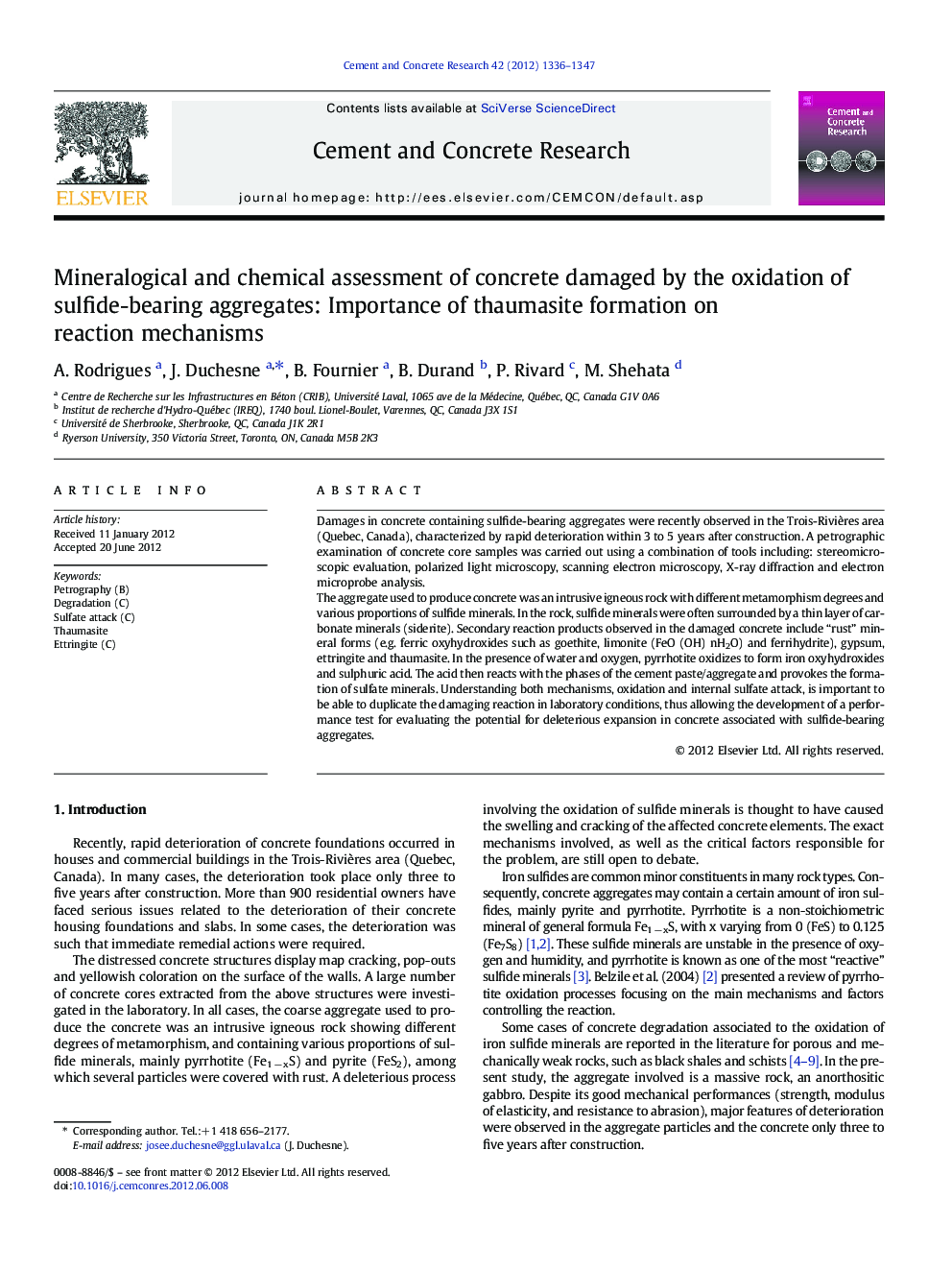| Article ID | Journal | Published Year | Pages | File Type |
|---|---|---|---|---|
| 1456653 | Cement and Concrete Research | 2012 | 12 Pages |
Damages in concrete containing sulfide-bearing aggregates were recently observed in the Trois-Rivières area (Quebec, Canada), characterized by rapid deterioration within 3 to 5 years after construction. A petrographic examination of concrete core samples was carried out using a combination of tools including: stereomicroscopic evaluation, polarized light microscopy, scanning electron microscopy, X-ray diffraction and electron microprobe analysis.The aggregate used to produce concrete was an intrusive igneous rock with different metamorphism degrees and various proportions of sulfide minerals. In the rock, sulfide minerals were often surrounded by a thin layer of carbonate minerals (siderite). Secondary reaction products observed in the damaged concrete include “rust” mineral forms (e.g. ferric oxyhydroxides such as goethite, limonite (FeO (OH) nH2O) and ferrihydrite), gypsum, ettringite and thaumasite. In the presence of water and oxygen, pyrrhotite oxidizes to form iron oxyhydroxides and sulphuric acid. The acid then reacts with the phases of the cement paste/aggregate and provokes the formation of sulfate minerals. Understanding both mechanisms, oxidation and internal sulfate attack, is important to be able to duplicate the damaging reaction in laboratory conditions, thus allowing the development of a performance test for evaluating the potential for deleterious expansion in concrete associated with sulfide-bearing aggregates.
